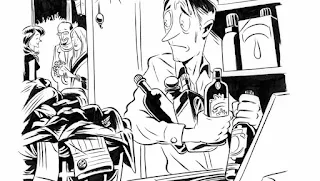Tired of wishlists featuring exotic brews available in some remote part of Belgium? We give you the ultimate list of quality beer you can buy in India.
Stella Artois
This six-century-old Belgian brew comes with a whole set of pouring rituals – and a chalice – but the light, full-bodied taste is worth it. Nobody does it quite like the Belgians.
Hoegaarden
The creamy Belgian wheat beer hits a home run with its hints of orange peel, coriander and spice.
Asahi
Clean and crisp, this dry beer is manufactured with yeast, ingredients and technology that all live up to impossibly high Japanese standards – naturally.
Foster's
With a kickback vibe from its home country, this Aussie lager is full-bodied, malty and eminently drinkable
Heineken
The toasted maltiness and mild fruitiness of this pale gold lager make it a staple at boys’ nights
Leffe Blond
The light Belgian beer gets its sunny hue from pale malt. Perfect as an aperitif, it’s smooth and fruity, with an aftertaste of bitter oranges
Kingfisher Ultra
It’s never just about the product when it comes to Kingfisher – it’s a lifestyle choice. And this light, refreshing beverage is a choice we can get behind.
Peroni
Crisp, clean and dry, this Italian lager, like Mama’s recipe for bolognaise sauce, is still brewed as it was back in 1963.
Budweiser
Beyond its fresh, light taste, the single best reason to drink Bud is to transport you back to those good old college days.
Schneider Weisse
Full-bodied, slightly fruity with a mild bitter aftertaste – the perfect way to wash down all that bratwurst.
Corona Extra
Even if she’s the only one drinking it, you're cooler isn’t complete without this Mexican export. Don’t forget the lime.
London Pride
Smooth, creamy, full-bodied with just the right amount of bitter, this British dark amber ale goes down easy.
San Miguel Pale Pilsen
The light golden brew, with a distinctive hoppy character, pairs well with Spanish food, despite its Filipino origins.
Carlsberg
The Danish company’s flagship brew, the Pilsner is a pleasing mix of bitter and sweet – a combination Liverpool fans will understand well.
source: http://www.gqindia.com









